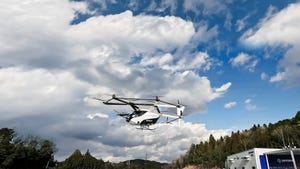Introduction to Non-Terrestrial networksIntroduction to Non-Terrestrial networks
NTNs use satellites and UAVs to provide seamless connectivity in areas unreachable by ground stations, such as mountains, oceans & the sky.
December 10, 2024

Already have an account?
They enable Internet access in infrastructure-limited regions. This document explores NTN technology and its key challenges.
Non-Terrestrial Networks (NTNs) are communication systems that use satellites and unmanned aerial vehicles (UAVs) to provide wireless connectivity in areas where traditional terrestrial networks can’t reach. These include remote or hard-to-reach places like mountainous regions, the open sea, and even the sky. NTNs help bridge connectivity gaps by offering internet access in places where ground-based infrastructure is not feasible.
There are several platforms used in NTN systems, including satellites in different orbits—geostationary orbit (GEO), medium earth orbit (MEO), and low earth orbit (LEO)—as well as aircraft. High Altitude Platform Stations (HAPS) and Unmanned Aircraft Systems (UAS) are also part of the NTN landscape and are currently undergoing demonstration tests to make their use more practical and commercially viable.
The primary goal of NTNs is to provide seamless communication by connecting mobile terminals in areas where traditional base stations can’t reach. This is particularly valuable in underserved areas, offering internet access to remote regions that lack the necessary ground-based infrastructure. With NTN technology, users in such areas can experience connectivity similar to that of urban environments, improving access to services and information.
In this context, this document aims to give an overview of NTN technology, explaining how it works and highlighting the key issues involved. Understanding these fundamentals is important as NTNs continue to evolve and pave the way for global connectivity, especially in areas where traditional networks have struggled to provide reliable service.
You May Also Like







